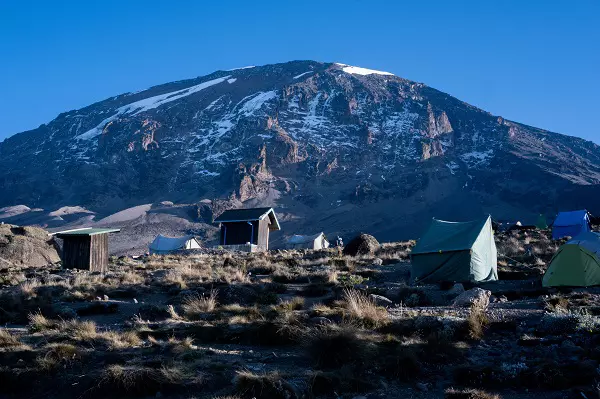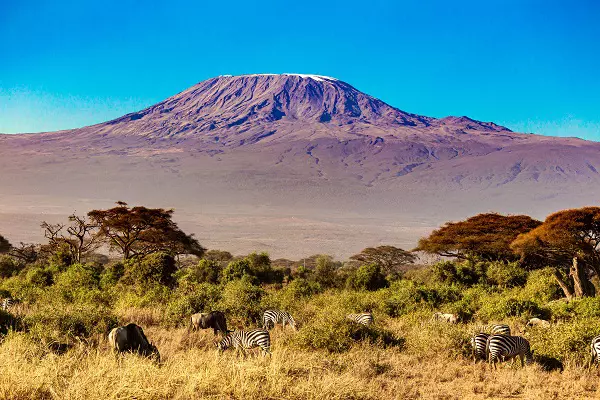
Best time to climb Kilimanjaro in January
January falls in the middle of the dry season, which is generally considered the best time to climb Kilimanjaro. The dry season, which runs from June to October and December to March, offers the best weather conditions for climbing. During this period, the weather is generally dry, with clear skies and moderate temperatures, making for excellent trekking conditions.
January is a popular month for climbing Kilimanjaro, and as such, it's important to book early to secure permits and accommodation. Climbers should also be aware that January falls within the peak season, meaning there are likely to be larger crowds on the mountain, which can lead to busier trails and campsites.
Weather conditions when climbing Kilimanjaro in January
Climbing Kilimanjaro in January means dealing with colder temperatures at higher altitudes, with the average temperature on the summit hovering around -7 degrees Celsius (19.4 degrees Fahrenheit). Climbers should prepare for these conditions by bringing appropriate cold-weather gear, including warm layers, hats, gloves, and sleeping bags rated for sub-zero temperatures.
While January is generally a dry month, there is still the possibility of rain and snowfall, especially at higher altitudes. Climbers should be prepared for changing weather conditions by bringing waterproof gear and clothing that will keep them dry and warm.
Challenges of climbing Kilimanjaro in January
Climbing Kilimanjaro in January presents several challenges that climbers need to consider.
First, the colder temperatures can make it more difficult to stay warm, especially at higher altitudes. This can lead to issues with hypothermia and frostbite if climbers are not properly prepared with the right gear and clothing.
Second, as mentioned earlier, January falls within the peak season, meaning there will be larger crowds on the mountain. This can lead to busier trails and campsites, which can impact the overall experience for climbers.
Finally, the colder temperatures and changing weather conditions can also make it more challenging to acclimatize to the altitude. Climbers should be aware of the signs and symptoms of altitude sickness and take appropriate measures to ensure they are acclimatizing properly.
Benefits of climbing Kilimanjaro in January
Despite the challenges, climbing Kilimanjaro in January also presents many benefits. The clear skies and moderate temperatures make for excellent trekking conditions, and the views of the surrounding landscape are truly breathtaking.
January is also an excellent time to spot wildlife on the lower slopes of the mountain. Many animals, including elephants, buffaloes, and baboons, come to the foothills to feed during this period, offering climbers a unique and unforgettable experience.
Finally, climbing Kilimanjaro in January can also be a more affordable option for travelers, as it falls outside of the peak holiday season, and as such, many tour operators offer discounts and special deals during this period.
Conclusion
Climbing Kilimanjaro in January can be an incredible experience for those who are prepared for the colder temperatures and changing weather conditions. The clear skies and moderate temperatures make for excellent trekking conditions, and the views of the surrounding landscape are truly breathtaking.
However, climbers should also be aware of the challenges that come with climbing Kilimanjaro in January, including colder temperatures, larger crowds, and changing weather conditions.

